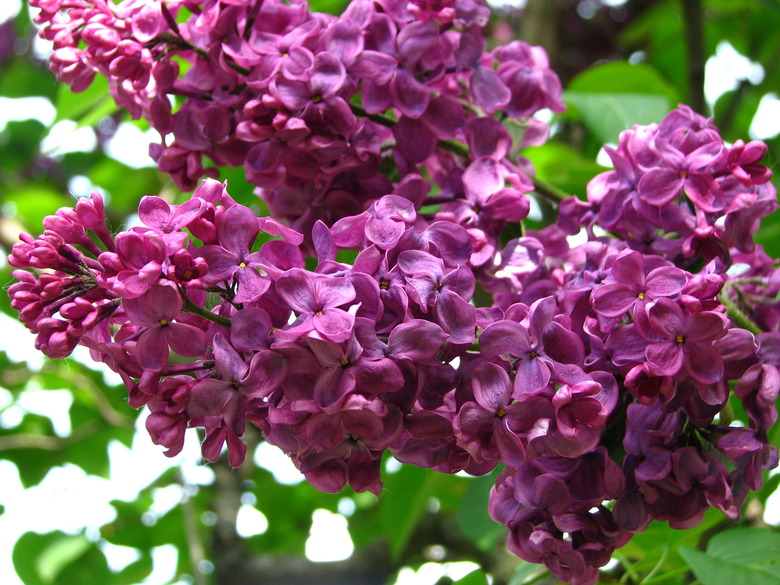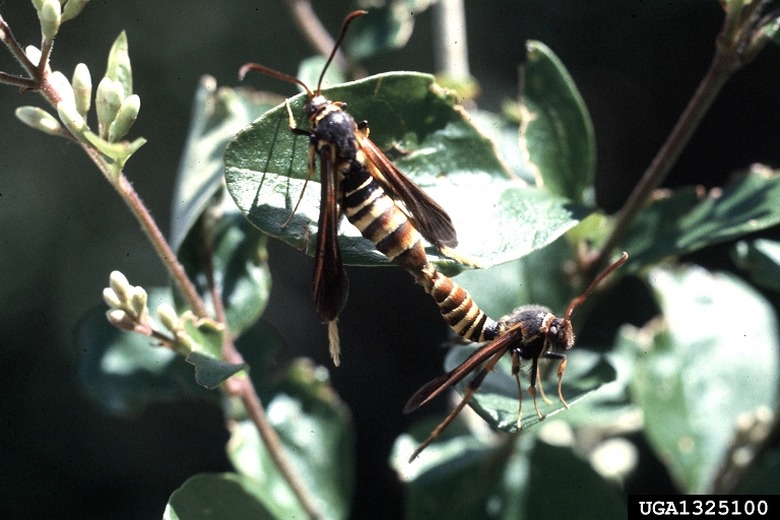Problems With Lilac Bushes
What Is Wrong With My Lilac Leaves?
Spring isn't spring without the heavenly scent and sumptuous flowers of the lilac bush. But as the flowers fade, you might notice that your shrub is suffering, because lilacs are prone to several fungal diseases—although sometimes shrubs are damaged by natural causes as well.
If your lilac (Syringa spp.) has brown spots on its leaves or they are wrinkled and drying out, several causes might be at play, not all of them disease-related.
Consider Both Biotic and Abiotic Factors
When diagnosing the likely cause of plant damage, look beyond the assumption that it is a plant disease or insect-based problem.
Sometimes, lilacs and other plants are victims of "abiotic" damage, which are non-living factors, such as storm damage, a response to herbicide drift, drought stress or freeze injury. Consider any weather events your area might have experienced, such as a particularly cold or wet spring.
For example, the University of Minnesota Extension reported that some gardeners experienced lilac dieback as a result of root damage after extremely cold temperatures when there was no snow to protect the plants. Conversely, a very warm and wet summer in the same state also resulted in lilac damage due to too much moisture, slowed development and herbicides that were weakened by the heat.
When looking at the shrub, see if there is any visible insect damage, such as chew holes, or fungal growths. These are examples of "biotic" damage caused by living organisms.
Sometimes, the cause can be both abiotic and biotic. The University of Maryland Extension reports that most plant damage is actually not due to biotic causes, especially if the bush has been in your landscape for less than two years. First, consider environmental conditions, such as weather extremes, lack of sun, overly wet soil or crowded conditions with little air circulation.
Tip
Though diseases and pests can be common too, lilacs and other plants are sometimes victims of "abiotic" damage, which are non-living factors, such as storm damage, a response to herbicide drift, drought stress or freeze injury. Consider any weather events your area might have experienced, such as a particularly cold or wet spring.
Common Fungal Infections for Lilacs
The common lilac (Syringa vulgaris, zones 3 to 7) is indeed prone to some fungal diseases, among them lilac Pseudocercospora leaf spot, powdery mildew and verticillium wilt. Another variety susceptible to similar diseases is the tree lilac (S. reticulata, zones 3 to 7).
Pseudocercospora Leaf Spot
Lilac Pseudocercospora leaf spot might be the culprit if your lilac's leaves are turning brown and dry. It first causes leaves to turn yellow, then brown and then to die.
Unfortunately, this disease can live for years on various plant parts, including the bark, dead flowers, stems or leaves. To combat this disease, practice good plant hygiene by cleaning up under the bush and pruning to improve air circulation within the shrub.
Verticillium Wilt
Unfortunately, if your lilac has verticillium wilt, there is no cure. What you'll see is sudden browning and dieback of branches, because the fungi have invaded the plant's vascular system, blocking the movement of water and nutrients.
If you notice a sudden dieback of branches, you may need to replace the bush completely with a disease-resistant cultivar. Be sure to discard the shrub completely, as all parts can spread this disease.
Powdery Mildew
In summer, lilac plants are particularly susceptible to powdery mildew. This will not kill the bush, but it is unsightly and can wither the leaves.
In general, when the rains come, the powdery mildew dissipates, and this deciduous shrub drops its leaves in autumn, so there's always another year.
Preventing or Treating Disease
To avoid fungal infections, preventative measures are your first line of defense: Prune lilacs regularly to ensure good airflow, and when planting, space lilacs far enough apart from other shrubs to avoid overcrowding, which can result in disease. Rake away and discard fallen leaves and other plant debris to remove areas where pathogens can thrive.
You can also apply a fungicide, but this is only useful when the disease is active, which is usually in spring during the early part of the growing season; applying fungicides in the fall isn't effective.
Common Pests for Lilacs
The primary pest that targets lilac is the lilac borer (Podosesia syringae), a clearwing moth that emerges in mid-May and lays eggs on the bark. The subsequent larvae bore into the shrub's heartwood. These can eventually kill a lilac bush if the infestation is heavy.
You know that a borer is the likely pest if you see frass (biological waste) being pushed out of the bark through holes. The leaves will wilt through an inability to get nutrients.
To dissuade this pest, avoid piling mulch around the shrub's crown and ensure good irrigation if the weather is hot and dry. Don't weed eat or mow close to the stem, as open wounds can attract borers and diseases.
There are no pesticides recommended for the lilac borer. The only option is to remove and destroy damaged and wilted branches.

